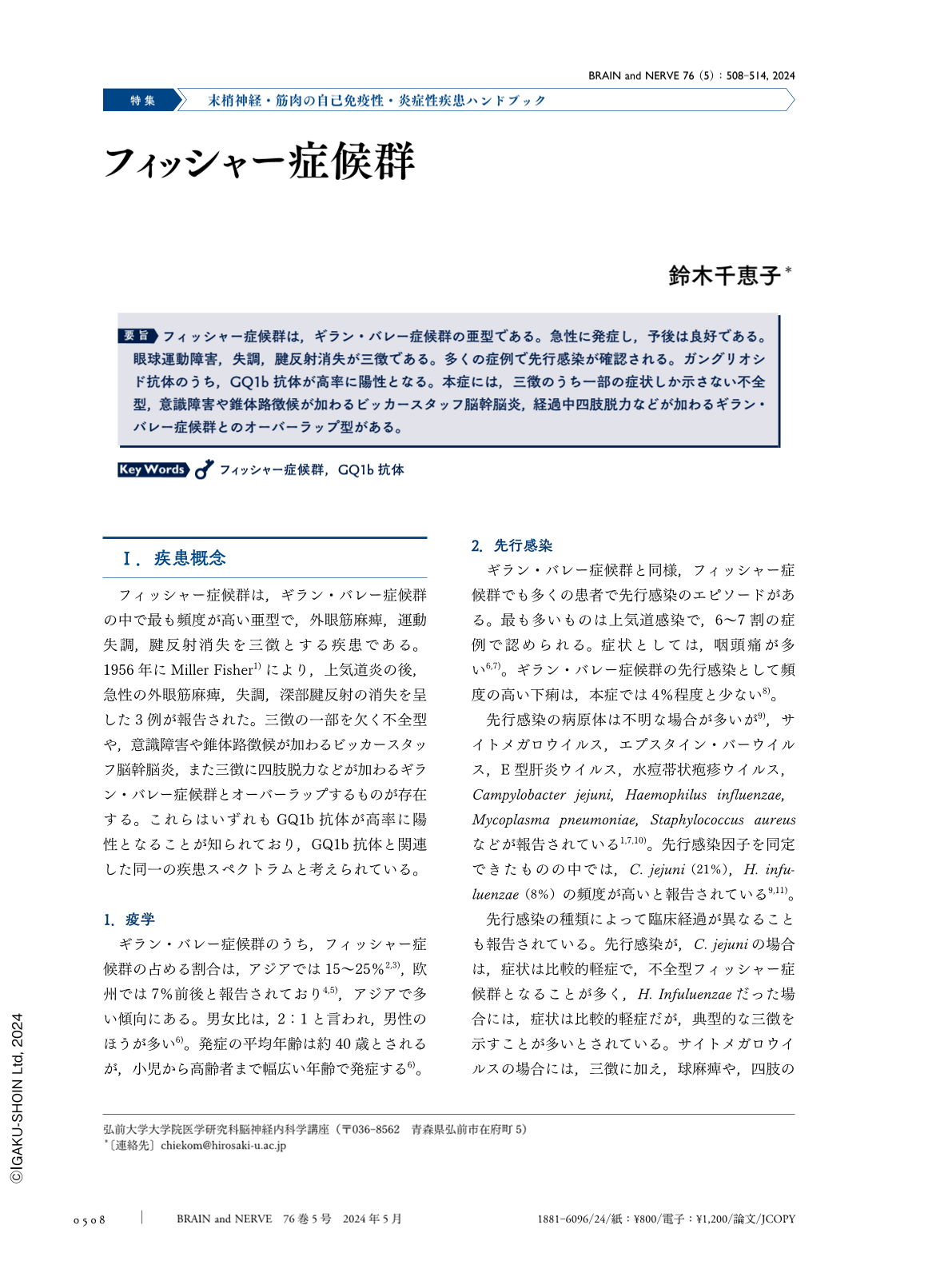Japanese
English
- 有料閲覧
- Abstract 文献概要
- 1ページ目 Look Inside
- 参考文献 Reference
フィッシャー症候群は,ギラン・バレー症候群の亜型である。急性に発症し,予後は良好である。眼球運動障害,失調,腱反射消失が三徴である。多くの症例で先行感染が確認される。ガングリオシド抗体のうち,GQ1b抗体が高率に陽性となる。本症には,三徴のうち一部の症状しか示さない不全型,意識障害や錐体路徴候が加わるビッカースタッフ脳幹脳炎,経過中四肢脱力などが加わるギラン・バレー症候群とのオーバーラップ型がある。
Abstract
Fisher syndrome is recognized as a variant of Guillain-Barré syndrome, encompassing acute onset immune-mediated neuropathies marked by the classical triad of ataxia, areflexia, and ophthalmoplegia. Generally, Fisher syndrome follows a self-limited course with a good prognosis. Ophthalmoplegia, typically bilateral, progresses to complete external ophthalmoplegia within 1-2 weeks. Ataxia, often very severe, may cause an inability to walk without support despite normal strength. Fisher syndrome is also frequently concomitant with additional clinical features, including ptosis, internal ophthalmoplegia, facial nerve palsy, sensory deficits, and bulbar palsy. The confirmation of an antecedent infection is often established. Among the ganglioside antibodies, anti-GQ1b antibodies exhibit positivity in over 80% of patients. The syndrome manifests in three distinct types: a partial subtype exhibiting only a subset of the triad symptoms, Bickerstaff's brainstem encephalitis marked by impaired consciousness and pyramidal tract signs, and an overlapping subtype with Guillain-Barré syndrome, characterized by weakness in the extremities.

Copyright © 2024, Igaku-Shoin Ltd. All rights reserved.


